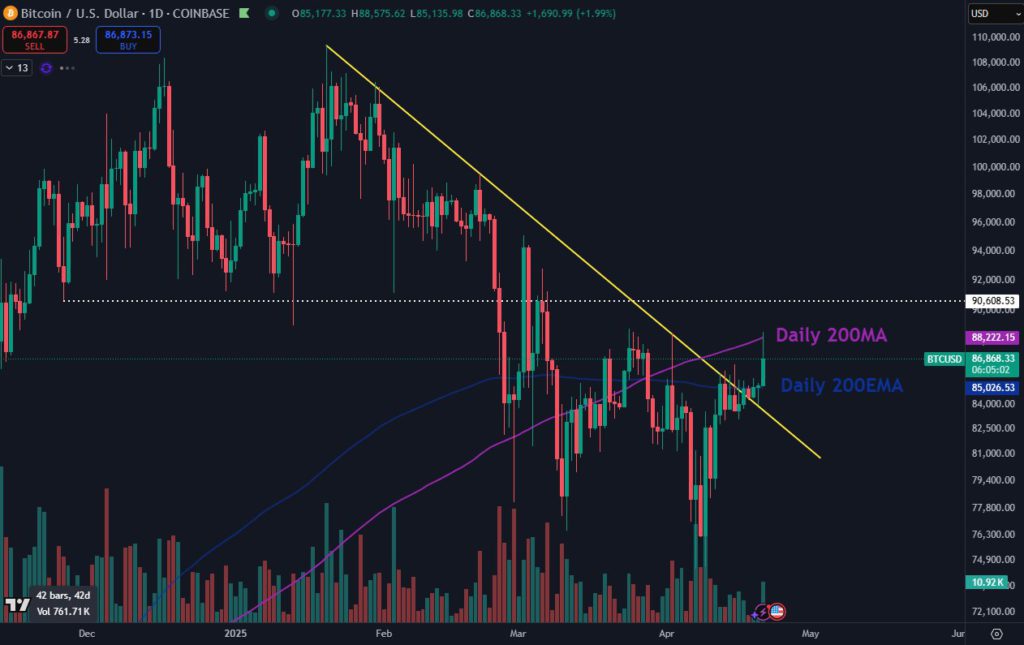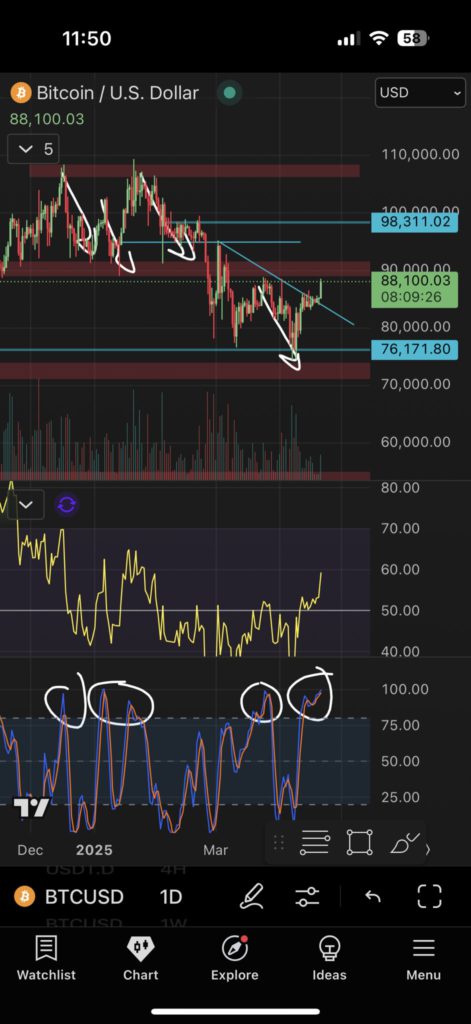Bitcoin recently rebounded due to Federal Reserve independence factors, with prices reaching near $89,000, an important resistance area that technical analysts view as a level where selling pressure historically exceeds buying pressure, preventing further price increases. After reaching this area, Bitcoin failed to effectively break through and stabilize, instead showing a clear "Price Rejection" phenomenon. This typically means that sellers are stronger than buyers at this level, causing prices to turn downward.
This may indicate that early buyers choose to take profits at this high point, or that a large number of sell orders are pre-placed near this resistance level. The inability to break through the key resistance increases the possibility of a short-term price correction.
Technical Analysis: 15% Potential Pullback
Based on this price rejection near $89,000, analysts further point out that Bitcoin may face a price correction risk of about 15%. Analysts believe that from the high point of $89,000 (or rejection point), a downward movement of about 15% (calculated as $89,000 * (1 – 0.15) = around $75,650) represents an important support area. This area could be a previous price-dense trading zone, an important Moving Average position, or a key Fibonacci Retracement level.
If prices truly pullback to this area and receive buying support, it may end the short-term decline. However, if this potential support level is also broken, it could trigger a more significant drop. Therefore, this 15% pullback prediction provides market participants with a potential downside risk interval to closely monitor.

BTC Enters Overbought Zone
Another trader, Roman, mentioned that the current RSI index may indicate a high possibility of market correction. When prices approach $89k, the RSI being in the overbought zone (usually above 70) or showing bearish divergence (price making new highs while RSI does not) increases the likelihood of a pullback.
The chart shows that historically, when RSI exceeds a certain value, it is often followed by a decline. Recent RSI values have shown such signs, with historical data supporting this RSI pullback theory.
Additionally, there are three small technical indicators that may suggest a pullback trend:
- Volume: Encountering resistance at $89k accompanied by massive trading volume, which is typically a stronger reversal signal.
- Moving Averages: Prices falling below key short-term moving averages (such as 20-day or 50-day moving averages) may be seen as a signal of short-term trend weakening.
- Market Funding Rates: In derivatives markets, excessively high funding rates may indicate an overcrowded long position, making the market prone to deleveraging-induced pullbacks.
Potential Shift in Economic Hedging
Recently, benefiting from Trump's threat to the Federal Reserve Chairman Powell, gold and Bitcoin have seen a new wave of hedging funds. However, it must be noted that Bitcoin and gold have very different hedging properties and market characteristics. Under Trump's uncertain policies, there is still a high possibility of short to medium-term hedging needs resulting in "gold rising, Bitcoin falling".
This means that Bitcoin's rapid rise from $70,000 to near $90,000 may be a temporary effect. Data and related historical technical analysis indicators suggest a high probability of current pullback. If Bitcoin rises gradually with high trading volume, it might be a relatively healthy state for the overall technical structure.
However, readers must be reminded to remain rational and patient. The cryptocurrency market is extremely volatile, and short-term price corrections are normal. Technical analysis predictions are not 100% accurate, and the market can show unexpected trends at any time. Investors should develop reasonable trading strategies based on their risk tolerance, investment goals, and market judgment, avoiding emotional decisions due to short-term market fluctuations.







